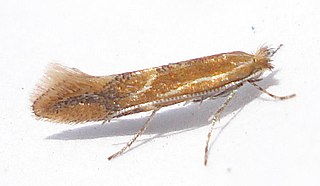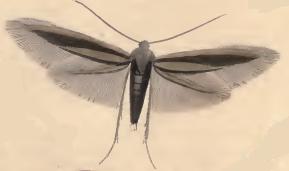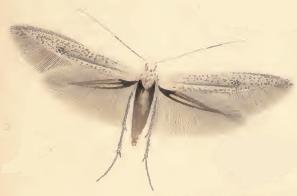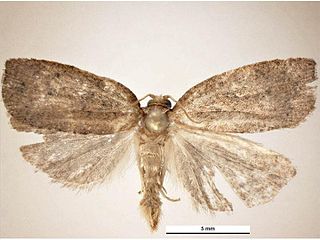The Orto Botanico Conservativo Francesco Busnello is a botanical garden designed by the Accademia Trevigiana per il Territorio, and located on Viale Nazioni Unite, Treviso, Veneto, Italy. Starting from 2022 it is open daily and operated by NOI San Paolo.

Callisto denticulella is a moth of the family Gracillariidae. It is found in most of Europe, except the Balkan Peninsula and islands in the Mediterranean Sea. It is also known in Canada and the United States.
Stigmella oxyacanthella is a moth of the family Nepticulidae, found in Europe and North America. The larvae are leaf miners feeding inside the leaves of trees and shrubs, such as hawthorn, apple and pear.

Leucoptera malifoliella, the pear leaf blister moth, ribbed apple leaf miner or apple leaf miner, is a moth of the Lyonetiidae family that can be found in all of Europe.

Phyllonorycter corylifoliella, the hawthorn red midget moth, is a moth of the family Gracillariidae. It is found in all of Europe.

Phyllonorycter blancardella, the spotted tentiform leafminer, is a moth of the family Gracillariidae. It is known from all of Europe, east to Ukraine and central Anatolia. It is also known throughout North America including Nova Scotia, Quebec, Ontario, Wisconsin and California.
Phyllonorycter turanica is a moth of the family Gracillariidae. It is known from Afghanistan, North Macedonia, Armenia, Iran, Azerbaijan, Georgia, Kazakhstan, Kyrgyzstan, the Caucasus, Tajikistan, Turkmenistan and Uzbekistan.

Phyllonorycter mespilella is a moth of the family Gracillariidae. It is found from Germany to the Iberian Peninsula, Sardinia, Italy and the Carpathian Mountains and from Ireland to southern Russia. It also occurs over much of western North America, from California north to British Columbia, and east to Utah and New Mexico.

Phyllonorycter sorbi is a moth of the family Gracillariidae. It is known from all of Europe, except the Balkan Peninsula.

Phyllonorycter crataegella, the apple blotch leafminer, is a moth of the family Gracillariidae. It is known from Canada the United States.
Parornix quadripunctella is a moth of the family Gracillariidae. It is known from Québec, Canada, and Georgia, Kansas, Kentucky, Maine, Maryland, Vermont and Pennsylvania in the United States.
Parornix geminatella, the unspotted tentiform leafminer moth, is a moth of the family Gracillariidae. It is known from Québec, Canada, and Florida, Georgia, Maine, Maryland, New York, Vermont, Texas, Colorado, Missouri, Kentucky and Connecticut in the United States.

Acleris holmiana, the golden leafroller moth, is a moth of the family Tortricidae. It is found in most of Europe and Asia Minor.

Coleophora violacea is a moth of the family Coleophoridae. It is found from Fennoscandia to the Pyrenees, Italy and Hungary and from Great Britain to Russia.

The fruit tree case moth is a moth of the family Coleophoridae, found in western Europe.
Coleophora tadzhikiella is a moth of the family Coleophoridae. It is found in Tajikistan.

Planotortrix octo is a moth of the family Tortricidae. It is endemic to New Zealand, where it is found in both the North and South islands.

The Maleae are the apple tribe in the rose family, Rosaceae. The group includes a number of plants bearing commercially important fruits, such as apples and pears, while others are cultivated as ornamentals. Older taxonomies separated some of this group as tribe Crataegeae, as the Cydonia group, or some genera were placed in family Quillajaceae.

Malinae is the name for the apple subtribe in the rose family, Rosaceae. This name is required by the International Code of Nomenclature for algae, fungi, and plants, which came into force in 2011 for any group at the subtribe rank that includes the genus Malus but not either of the genera Rosa or Amygdalus. The group includes a number of plants bearing commercially important fruits, such as apples and pears, while others are cultivated as ornamentals.

Acrobasis indigenella, the leaf crumpler, is a species of snout moth in the genus Acrobasis. It was described by Philipp Christoph Zeller in 1848, and is known from eastern North America.








